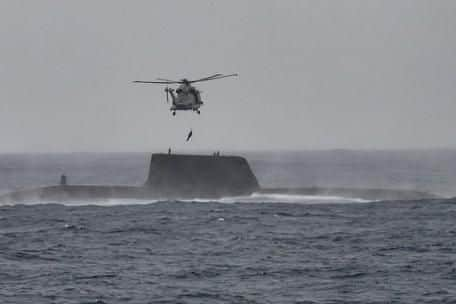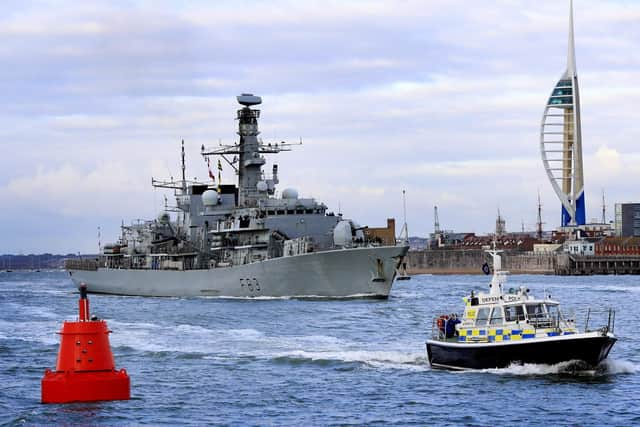Royal Navy Type 23 frigate HMS St Albans tackles dangerous training exercise with hunter-killer submarine HMS Astute


Portsmouth-based Type 23 frigate HMS St Albans joined submarine HMS Astute on a challenging exercise in the Atlantic.
As well as sharpening their sub-hunting teeth, both vessels also tackled dangerous crew transfers while battling against the elements.
Advertisement
Hide AdAdvertisement
Hide AdSt Albans' Merlin helicopter from 814 Naval Air Squadron - nicknamed the Flying Tigers - flew between both vessels, winching submariners and sailors while braving the wind and rain.


Lieutenant Commander Andrew Mitchell, flight commander on board the Portsmouth-based frigate, said: ‘The transfer was one of the most challenging - and professionally rewarding - experiences.
‘We don't get to do this often and certainly not in such adverse weather conditions.’
The training exercises come amid international tension over Russia’s growing submarine fleet.


Advertisement
Hide AdAdvertisement
Hide AdUK and US-based maritime chiefs have warned that Russia is becoming an increasing threat to the West, with the spotlight fixed firmly on the Kremlin’s ambitions to control the Arctic while increasing its operations in the Atlantic.
Russian military leaders have said they have no interest in a direct conflict and that they have as much right as any nation to stake a claim to the inhospitable wastes of the Arctic.
However, speaking recently, American Admiral James Foggo – who heads Nato’s Allied Joint Force Command in Naples – said Russia is investing heavily in its submarine fleet and wants to build an ‘asymmetric’ threat to Nato.


Commander John Cromie, St Albans’ commanding officer, said training exercises were essential to honing a capable Royal Navy fighting force to protect British shores and the nation’s interests across the globe.
Advertisement
Hide AdAdvertisement
Hide AdHe said: ‘It clearly demonstrates the Royal Navy's ability to project a potent capability in the wider Atlantic to protect UK interests.’
St Albans and Clyde-based Astute are two of the vessels that form the Royal Navy's anti-submarine capability.
The Astute-class submarines are primarily responsible for safe-guarding the nuclear deterrent, which this year the Royal Navy is celebrating 50 years of unbroken patrols.
The submarine class – of which Clyde-based HMS Astute was the first in the line – is the largest, most advanced and powerful attack submarines ever operated by Britain.
Advertisement
Hide AdAdvertisement
Hide AdEquipped with Spearfish torpedoes and Tomahawk cruise missiles, it is capable of dealing with threats above and below the water.
While St Albans is packed with specialist sonar and torpedoes designed to counter any submarine threat.
St Albans is returning to continue training in waters around Scotland.
She is expected to return to Portsmouth later this year.
